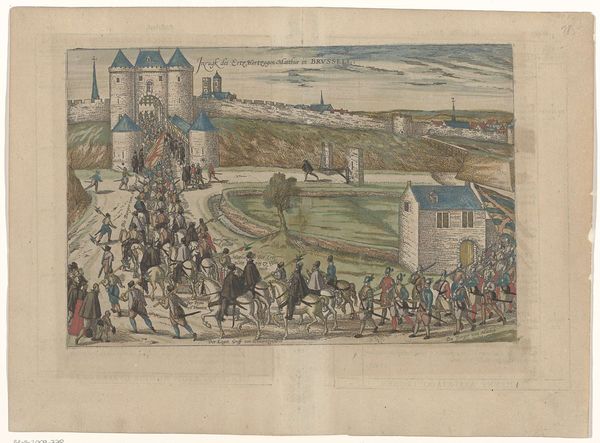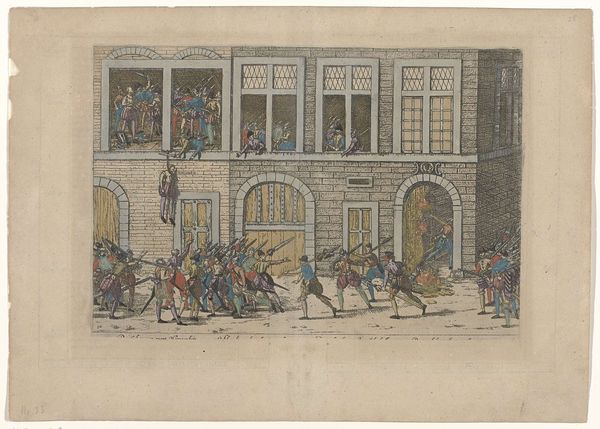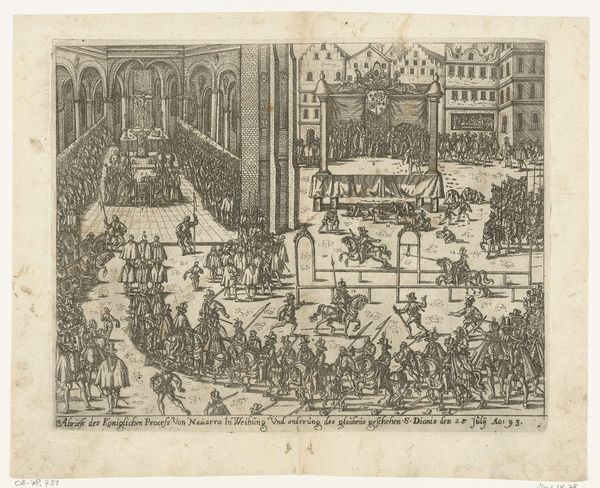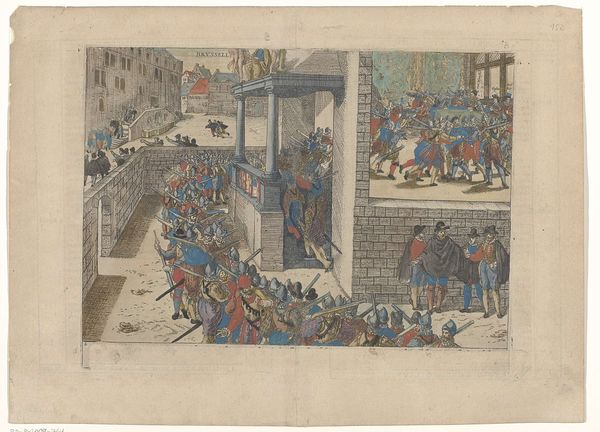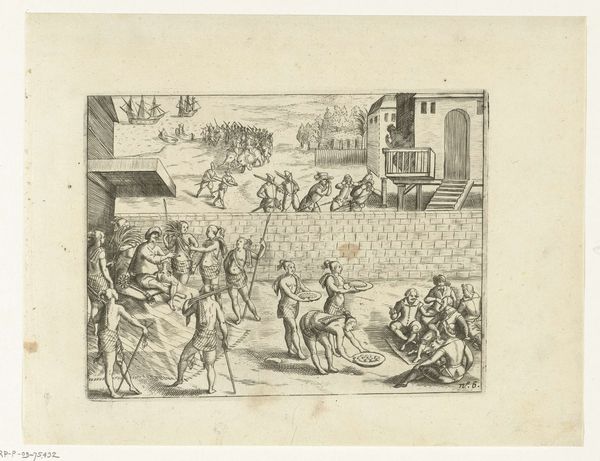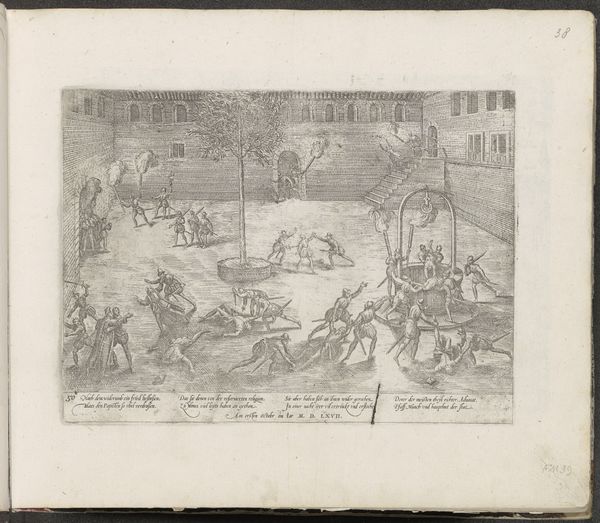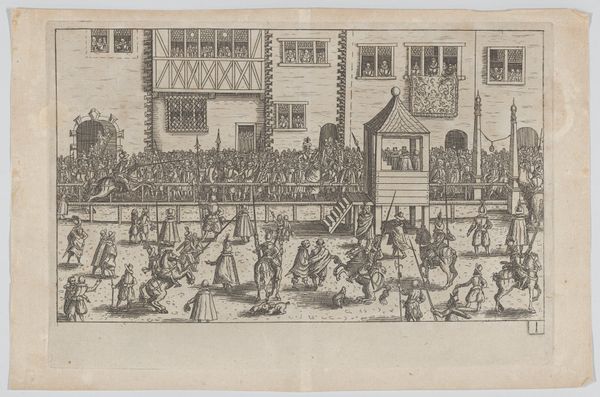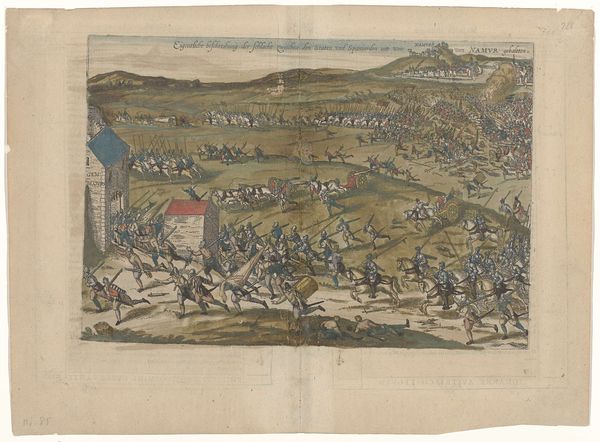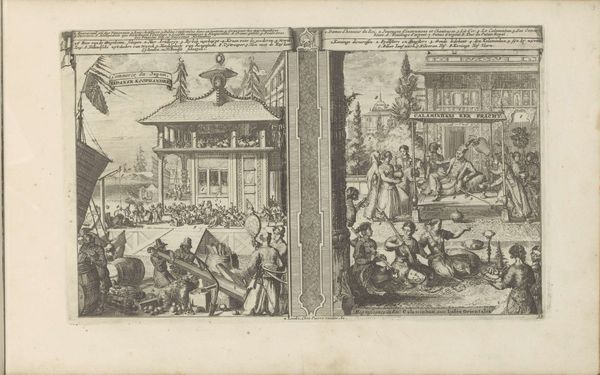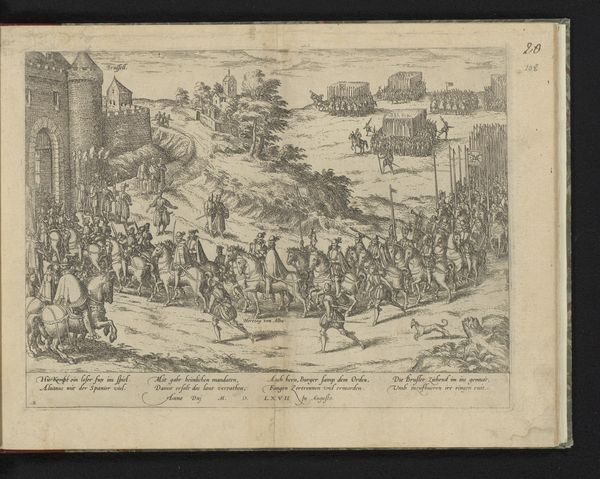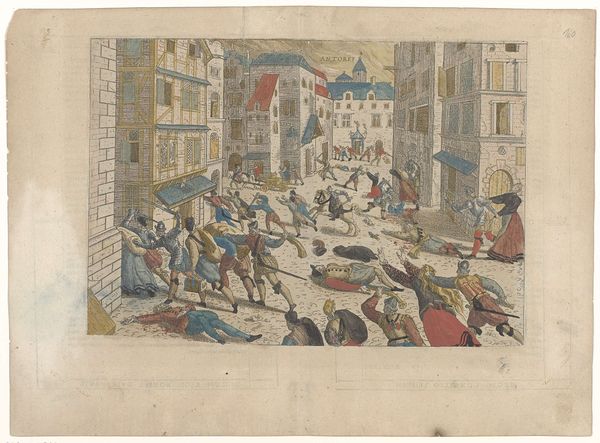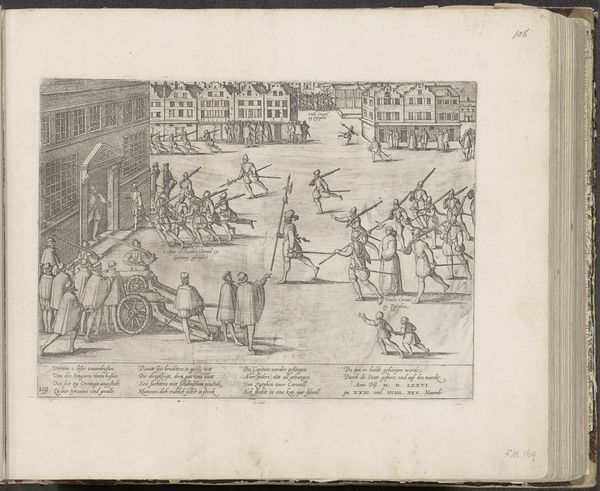
print, etching, watercolor, engraving
#
water colours
#
narrative-art
# print
#
etching
#
figuration
#
11_renaissance
#
watercolor
#
cityscape
#
history-painting
#
northern-renaissance
#
engraving
#
watercolor
Dimensions: height 267 mm, width 373 mm
Copyright: Rijks Museum: Open Domain
This print, “Moord op de protestanten te Cahors, 1561,” was made by Frans Hogenberg sometime between 1570 and 1590. The method used was etching, a printmaking technique that democratized image production in Early Modern Europe. Take a close look. The fine lines, all bitten into the metal plate by acid, allowed for the relatively quick production of multiple images. Hogenberg then added color by hand, making each sheet a unique product, but ultimately the same. The process enabled Hogenberg to disseminate information about religious conflict that swept through Europe in the 16th century. The relatively low cost of production made these images accessible to a broad audience, and this is where its radicality lies. By engaging with a mechanical process, Hogenberg blurred the lines between art, craft, and propaganda. He wasn't just creating a static image, he was participating in the social and political discourse of his time.
Comments
No comments
Be the first to comment and join the conversation on the ultimate creative platform.

